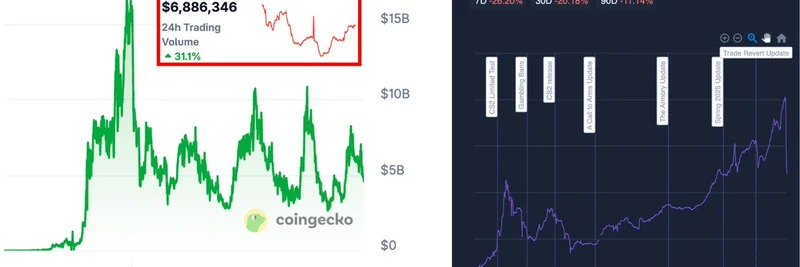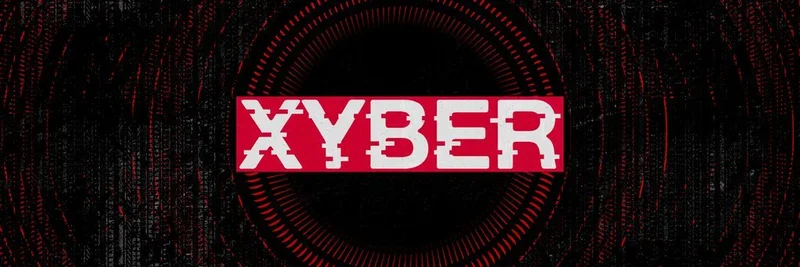In the ever-evolving world of digital assets, a surprising shift has just occurred that's turning heads in both the crypto and gaming communities. According to a recent tweet from DegenerateNews, NFTs have officially flipped CS2 skins in terms of market cap. This comes right after Valve rolled out a new feature in Counter-Strike 2 (CS2) that essentially diluted the supply of high-end skins, sending their prices into a nosedive.
For those new to the scene, let's break it down. NFTs, or Non-Fungible Tokens, are unique digital assets on the blockchain, often representing art, collectibles, or even virtual real estate. On the other hand, CS2 skins are cosmetic items in the popular first-person shooter game Counter-Strike 2, developed by Valve. These skins don't affect gameplay but are highly sought after for their rarity and aesthetics, creating a massive secondary market where players trade them like stocks.
The tweet highlights charts from CoinGecko and PriceEmpire showing the stark contrast. On the left, we see the NFT market cap holding steady around $4.66 billion, with a slight dip but impressive trading volume. Meanwhile, the CS2 market cap has plummeted to about $4.4 billion, down significantly from its peaks.
What caused this flip? Valve introduced a feature that increased the availability of expensive skins, effectively flooding the market and reducing their scarcity. In economic terms, this is like printing more money—it devalues what's already out there. Gamers who invested thousands in rare knives or weapon finishes are feeling the burn, as one reply quipped: "imagine holding a $35k pixel knife just to get rugged by patch notes."
This event underscores a key difference between traditional gaming economies and blockchain-based ones. In games like CS2, the developer (Valve) has full control and can alter supply at will, leading to sudden value crashes. NFTs, however, operate on decentralized blockchains where supply is often fixed or governed by smart contracts, offering more predictability—though not without their own volatility from market sentiment.
For meme token enthusiasts, this is a reminder of how quickly narratives can shift in digital assets. Meme coins, much like NFTs and gaming items, thrive on hype, scarcity, and community. If you're dabbling in blockchain gaming or looking to diversify, consider projects that blend gaming with crypto, like those on platforms such as OpenSea for NFTs or emerging meme token ecosystems that incorporate play-to-earn mechanics.
Replies to the tweet echo the sentiment: one user noted how gaming skins having a larger market cap than most NFT projects speaks volumes about utility versus speculation. Another joked about bored ape holders celebrating the news. It's a wild ride, but events like this highlight opportunities in the space—perhaps it's time to scout undervalued NFTs or meme tokens poised for the next pump.
As the lines between gaming, crypto, and memes blur, staying informed is key. Keep an eye on updates from Valve and major NFT marketplaces to catch the next big move in digital collectibles.


